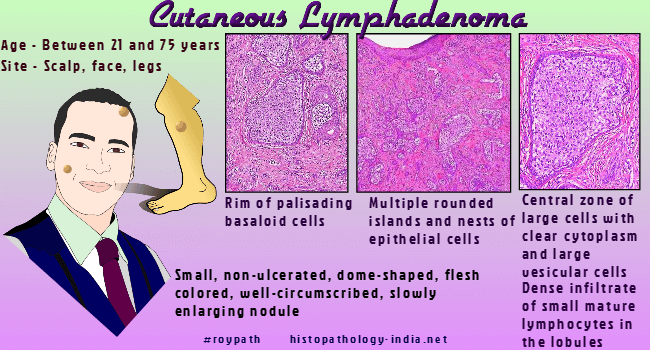|

Custom Search
|
|
Dermpath-India Pathology of Cutaneous Lymphadenoma
|

Cutaneous lymphadenoma is a rare tumour with distinctive histologic features. This entity was originally described as lymphoepithelial tumour of the skin by Santa Cruz and Barr in 1987. It was renamed cutaneous lymphadenoma in 1991.
Ackerman et al considered that cutaneous lymphadenoma is a
variant of trichoblastoma ("adamantinoid trichoblastoma"). The lesion has usually been present for many months or years. Age and sex: Usually between 21 and 75 years without a sex predominance. Site: Face and scalp regions or legs.
Educational Gif – Pathology of Cutaneous Lymphadenoma
Differential diagnosis: Clear cell syringoma ; clear cell basal cell carcinoma ; lymphoepithelioma-like carcinoma of skin. Cutaneous lymphadenoma does not tend to recur after surgical excision.
|
|
Further reading:
Mohs micrographic surgery for cutaneous lymphadenoma. Cutaneous lymphadenoma: a case report and immunohistochemical study. Cutaneous lymphadenoma: a rare clinicopathological entity. Lymphoepithelial tumor of the skin (abstr.). J Cutan Pathol 1987; 14: 345.
|
|
|
Visit:-
Infectious Disease Online
Copyright © 2022 histopathology-india.net



